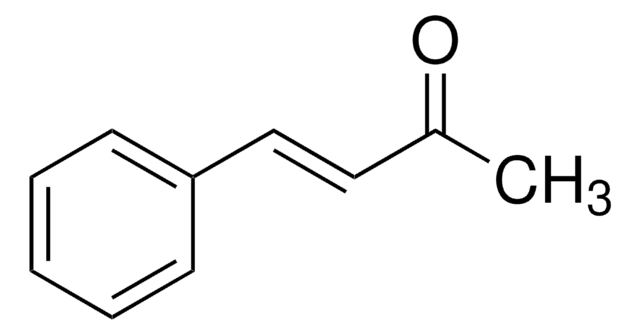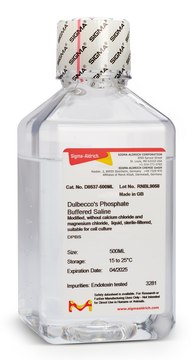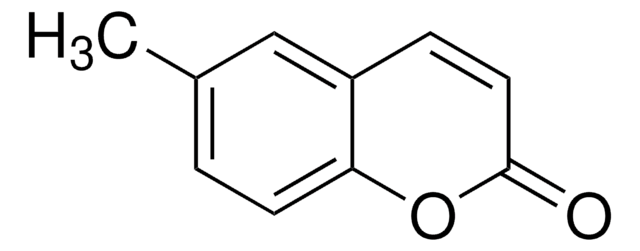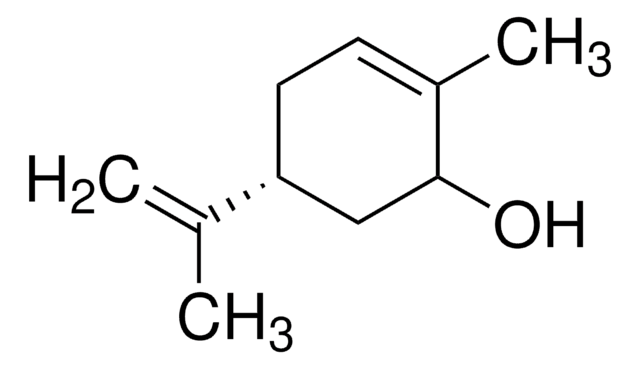W401900
Farnesal, mixture of isomers
≥85%
Synonym(s):
3,7,11-Trimethyl-2,6,10-dodecatrienal
Sign Into View Organizational & Contract Pricing
Select a Size
All Photos(1)
Select a Size
Change View
About This Item
Empirical Formula (Hill Notation):
C15H24O
CAS Number:
Molecular Weight:
220.35
FEMA Number:
4019
Beilstein:
1723427
EC Number:
MDL number:
UNSPSC Code:
12164502
PubChem Substance ID:
Flavis number:
5.148
Organoleptic:
minty
biological source:
synthetic
food allergen:
no known allergens
Recommended Products
biological source
synthetic
Quality Level
Assay
≥85%
refractive index
n20/D >1.4920 (lit.)
bp
126-129 °C/3.5 mmHg (lit.)
density
0.909 g/mL at 25 °C (lit.)
application(s)
flavors and fragrances
Documentation
see Safety & Documentation for available documents
food allergen
no known allergens
Organoleptic
minty
Looking for similar products? Visit Product Comparison Guide
Signal Word
Warning
Hazard Statements
Precautionary Statements
Hazard Classifications
Eye Irrit. 2 - Skin Irrit. 2 - STOT SE 3
Target Organs
Respiratory system
Storage Class Code
10 - Combustible liquids
WGK
WGK 2
Flash Point(F)
235.4 °F - closed cup
Flash Point(C)
113 °C - closed cup
Personal Protective Equipment
dust mask type N95 (US), Eyeshields, Gloves
Choose from one of the most recent versions:
Already Own This Product?
Find documentation for the products that you have recently purchased in the Document Library.
Satoshi Endo et al.
Bioorganic & medicinal chemistry, 18(7), 2485-2490 (2010-03-23)
A human aldose reductase-like protein, AKR1B10 in the aldo-keto reductase (AKR) superfamily, was recently identified as a therapeutic target in the treatment of several types of cancer. In order to identify potential leads for new inhibitors of AKR1B10, we adopted
Kenji Shimomura et al.
Journal of chemical ecology, 34(4), 467-477 (2008-03-21)
The southern cowpea weevil, Callosobruchus chinensis (Coleoptera: Bruchidae), is a major pest of stored legumes in warm temperate and tropical climates. The female sex attractant pheromone was extracted from filter-paper shelters taken from containers that housed virgin females. The extracts
Tomoyo Sakata et al.
Experimental & applied acarology, 29(3-4), 279-291 (2003-11-26)
The composition of oil gland exudates from two oribatid mites, Trhypochthoniellus sp. and Trhypochthonius japonicus, was studied with reference to the related species Trhypochthoniellus crassus. Trhypochthoniellus sp. contained a mixture of seven compounds; (Z,Z)-6,9-heptadecadiene, geranial, 3-hydroxybenzene-1,2-dicarbaldehyde (gamma-acaridial), neryl formate, neral
Constantinos Tsangarakis et al.
The Journal of organic chemistry, 73(7), 2905-2908 (2008-03-07)
The sesquiterpene nanaimoal was synthesized in 21% overall yield and in a biomimetic manner. As a key step, the acid-catalyzed cyclization of farnesal under zeolite NaY confinement conditions was used. The intrazeolite cyclization of farnesal affords as major product a
H Inoue et al.
Biochemical and biophysical research communications, 196(3), 1401-1405 (1993-11-15)
Farnesal and 3-hydroxy-2,3-dihydrofarnesal (3-hydroxy-3,7,11-trimethyl-6,10-dodecadiene-1-al) were formed from farnesol when the alcohol was incubated with the protoplast of Botryococcus braunii B race strain. This fact suggests the existence of farnesal hydratase in the alga. Feeding experiments showed that both farnesal and
Our team of scientists has experience in all areas of research including Life Science, Material Science, Chemical Synthesis, Chromatography, Analytical and many others.
Contact Technical Service








